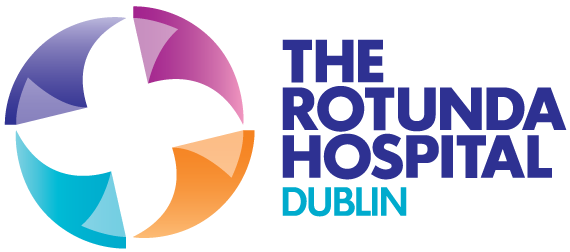Ultrasound Scans
Women are offered an ultrasound scan at their booking visit. This scan is able to check your dates, the number of babies you are expecting and it will show you the baby’s heart beating. You will need to have a full bladder for any scan before 15 weeks.
Your partner may accompany you to all your scan appointments but unfortunately children are not allowed. Recording devices are not allowed.
You can usually get a printout picture of your baby at the end of the examination. To keep your picture in good condition, don’t leave it in sunlight for a long period of time and don’t laminate it, as this will cause the picture to fade, losing your precious memories.
Fetal Anatomy Scan
All women attending the Rotunda Hospital are offered a detailed ultrasound scan at about 20 weeks to see if their baby is developing normally. This is known as the fetal anatomy scan. A large amount of detail about your baby will be visible at this scan. Seeing your baby on the ultrasound screen is a very exciting and emotional time.
What can this scan detect?
This ultrasound scan is very accurate but it cannot diagnose all birth defects. Sometimes, we cannot get clear images of the baby due to the way that your baby may be lying in the womb or because of the mother’s size. If the scan is complete, we would expect to pick up at least:
- 95% of spina bifida
- 80% of cleft lip
- 30-50% of major congenital heart defects
This scan can also identify 50% of babies with Down syndrome, but the first trimester screening (FTS) test and non-invasive prenatal test (NIPT) are better for this. Because 30-50% of babies with Down syndrome appear normal on ultrasound, only a chorionic villus sampling procedure or amniocentesis can give you this information for certain. It is also important to realise that ultrasound scans in pregnancy do not detect problems like cerebral palsy or autism.
While some babies with chromosomal abnormalities have these soft markers, it is important to remember that 15% of normal babies have at least one ultrasound soft marker. The only way to diagnose or exclude a chromosomal problem for certain is to have an amniocentesis. If you would prefer not to know about these markers please inform us prior to the scan.
If the scan suggests a problem or an abnormality, you and your partner will be informed. We will arrange for you to meet with a consultant who specialises in fetal medicine as soon as possible or within 2 working days.
A full support service will be available for you should any problems be detected, including referral to appropriate specialists. It is important to remember that you will be involved in all decisions regarding the management of your pregnancy. A copy of your report will be sent to your referring hospital, doctor or midwife to ensure good communication.
Why have a fetal anatomy scan?
The vast majority of babies are normal. However all women, whatever their age, have a small chance of delivering a baby with a physical or mental disorder. Many such abnormalities can be diagnosed or ruled out with the fetal anatomy scan.
Reasons to have this scan include:
- to reassure you that your baby is likely to be structurally normal;
- to confirm your dates;
- to detect birth defects, such as spina bifida or heart problems;
- if you are concerned about the chances of chromosome problems like Down syndrome, subtle markers can be sought that may suggest a higher risk that your baby may have one of these problems;
- if you want to know the sex of your baby, this can usually be seen at this scan.
When you attend for this scan we will tell you about everything that we see, unless you advise us that there are certain things that you don’t want to know about, such as the sex of your baby or markers for chromosome problems. Should you have any questions or concerns please contact the staff in the prenatal diagnosis clinic by phoning 01 872 6572.
Scans in Late Pregnancy
The anatomy scan is usually the last scan taken during pregnancy unless you are referred by the medical team for further scans. Ultrasound scans can also be used in late pregnancy to determine if the baby is growing properly and to check the liquor or fluid around your baby. They help to compile a ‘biophysical profile’ of your baby. This profile is a list of things that are checked and given scores by the midwife or doctor to see how well your baby is doing. The things checked and scored include the baby’s heart rate, the baby’s muscle tone, breathing movements and the amount of fluid around the baby. Other reasons for ultrasound scans in late pregnancy are if there is a possibility your waters have broken or to locate the exact position of the placenta. However, towards the end of pregnancy it can be difficult to get a complete picture on the printout, as the baby is now too big.
